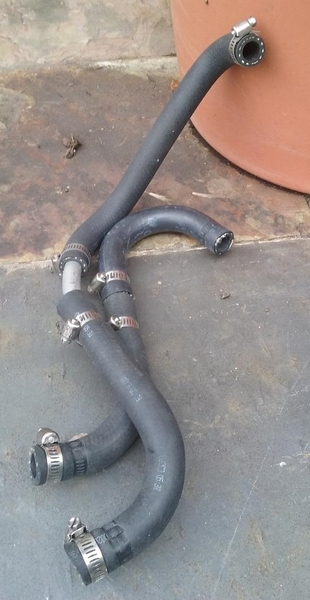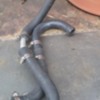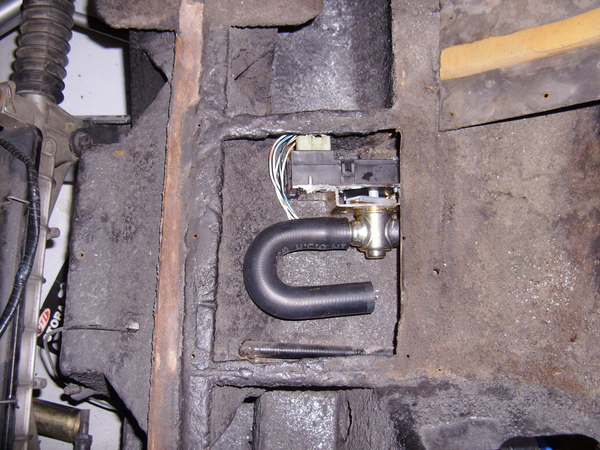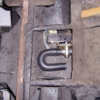Nate,
Looks good!!!! The one thing I did do, to address overheating THE CABIN in about 2 minutes......cuz it does....is I put two ball valves on the flat area above the spine, one accessible from either side...... It doesn't address George's very valid point about hose in the cabin.... but there are plenty of American classics that had a few inches of hose in the cabin where they then connected with the heater cores......
I would leave one valve open just enuf.....and then open and close the other one (which I could more easily get to) to "on and off" the heater.
Now, the original valves were located in the engine compartment...making it a firedrill of doors and hatches to turn the heat on or off......PLUS such a tangle of hose.........
The purpose of the all thehoses, unique valves, and "Y's" in the system was to be able to circulate water while the heater valves are closed. Without this feature, the system will gather air in the water pump and cause cavitation leading to engine overheating! Don't ask how I know this..........it weren't pretty!
Modern components (made after the 60's 70's), namely the shut off valves, now have a small hole in the butterfly blade that allows some water to circulate...satisfying the need to get rid of air bubbles out of the pump when they occur. During the 60's/70's Ford used "H" pipe adapters or designs that had a physical crossover that took care of this function when the valves shut off the water flow 100%.
When I got 878 way back when, my water valves weren't even present in my car any longer, and I had never seen one.... (only later once I owned a Fiat 124 and found a Goose with the valves still present, did I figure out what was what!) ...... I didn't worry about being accurate with this aspect. Reliability and functionality was more important since my intent was to "drive the wheels off the car"! I was more concerned with reducing "hose clutter" with those stupid valves! So I ran only two hoses from the engine, to the under car tubes. Unknowingly, a previous owner had installed a 1970 water pump which put ALL of the hoses on one side of the engine......so I was severely crowded for hose room at the time. LATER this was discovered and corrected..... but I still stayed with the two hose thing. In those two hose, I installed "T"s that had a 3/8" outlet/downleg on them, and used small diameter hose to make the "H" connection between the two hoses. The small diameter hose fit MUCH nicer from side to side on the top rail of that engine compartment along with the wiring........instead of 5/8" hose! This took care of the anti-cavitation thing and I never had another problem from this area of the cooling system again.
I do need to comment on Nate's comment about the eroded tube ends.....
1) mine were bad bad bad, and my large metal pipe at the water pump had been eroded to the point of non-use, where it was cut up and used to splice rubber hose together..... ALL BECAUSE of NO GROUND STRAP on the engine. Some of you may recall me preaching on this one...... burned starter contacts on the armature....funky starting...eroding aluminum parts...anode on the radiator capall disappearing....... All of that ended once the ground strap was returned!!!
2) This sort of wear can also be caused by caustic anti-freeze caused by lack of maintenance. That stuff needs to be flushed out every couple of years.....it doesn't last forever. Just do it. Your car will love you for it!
Hope this helps! Nate, GREAT PROGRESS!!!!! How exciting!!!
Cheers!
Steve











